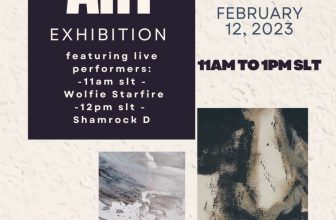
A drama lives within each painting by Raoul De Keyser. Even the sparsest works are entire galaxies buzzing with activity. Yet, as curator Helen Molesworth writes of Touch Game, the late artist’s current show at David Zwirner Gallery, De Keyser “deliciously halts the human impulse to make meaning.”
He may not always halt the impulse, but De Keyser’s paintings are fascinatingly inscrutable abstractions, with none of the compositional logic that grounds, say, an AbEx painting. Instead, he alludes to an inner logic that enlivens their quivering lines, floating orbs and squares, irregular shapes, and even their watery washes of color. In “Blue Note” (2006), an azure ground covers most of the modestly sized canvas, its visible brushstrokes both indicating the artist’s hand and evoking waves underscored by a few small dots and shapes and one large white form near the bottom that could be a landmass. The composition is so off-kilter, with the white form almost touching the bottom edge of the canvas and the center pure blue, that the dissonance between the painting’s materiality and its image can’t really be the point. It’s the awkwardness that stands out, discouraging potential readings just as it beckons them.

In “Untitled (Speed)” (1995), a row of green diamonds on a white ground enters the picture plane from one side, like a geometric abstraction on a race toward a finish line. Most of the composition is smeared, destroying the pattern and, for most artists, the painting’s value — and as a result, fostering a simultaneous sense of mystery and aesthetic wrongness. A similar sensibility is evident, without the smearing, in other paintings like “Proloog” and “Clos” (both 2003), in which green shapes that look like paper scraps randomly float on a neutral ground. These works create a drama of looking by doing nothing but being taciturn about their own being.
“I … always searched for forms of waywardness,” De Keyser said in an interview with historian Hans Theys. Because the waywardness of his paintings is a product of its unspoken logic, its actors — all those marks and variations that animate each work — are performing precisely the right roles. The apparent awkwardness is an illusion, just as what seems nonsensical to one living being might be meaningful to another, or to the universe at large. But we needn’t figure it out. In this way, De Keyser may be the most liberating painter I can think of.



Raoul De Keyser: Touch Game continues at David Zwirner Gallery (519 & 525 West 19th Street, Chelsea, Manhattan) through March 1. The exhibition was curated by Helen Molesworth.






